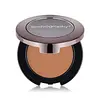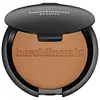What's inside
What's inside
 Key Ingredients
Key Ingredients

No key ingredients
 Benefits
Benefits

No benefits
 Concerns
Concerns

 Ingredients Side-by-side
Ingredients Side-by-side

Mica
Cosmetic ColorantOctyldodecyl Stearoyl Stearate
EmollientSilica
AbrasiveBoron Nitride
AbsorbentLauroyl Lysine
Skin ConditioningMagnesium Myristate
Caprylic/Capric Triglyceride
MaskingBis-Stearyl Dimethicone
EmollientWater
Skin ConditioningErythrulose
TanningPalmitoyl Isoleucine
Skin ProtectingIsochrysis Galbana Extract
Skin ConditioningPolyglyceryl-2 Triisostearate
EmulsifyingPtfe
Polyethylene
AbrasivePhenoxyethanol
PreservativeTitanium Dioxide
Cosmetic ColorantIron Oxides
CI 77163
Cosmetic ColorantMica, Octyldodecyl Stearoyl Stearate, Silica, Boron Nitride, Lauroyl Lysine, Magnesium Myristate, Caprylic/Capric Triglyceride, Bis-Stearyl Dimethicone, Water, Erythrulose, Palmitoyl Isoleucine, Isochrysis Galbana Extract, Polyglyceryl-2 Triisostearate, Ptfe, Polyethylene, Phenoxyethanol, Titanium Dioxide, Iron Oxides, CI 77163
Ingredients Explained
These ingredients are found in both products.
Ingredients higher up in an ingredient list are typically present in a larger amount.
Mica is a naturally occurring mineral used to add shimmer and color in cosmetics. It can also help improve the texture of a product or give it an opaque, white/silver color.
Serecite is the name for very fine but ragged grains of mica.
This ingredient is often coated with metal oxides like titanium dioxide. Trace amounts of heavy metals may be found in mica, but these metals are not harmful in our personal products.
Mica has been used since prehistoric times throughout the world. Ancient Egyptian, Indian, Greek, Roman, Aztec, and Chinese civilizations have used mica.
Learn more about MicaThis ingredient is a combination of red, black, and yellow iron oxide pigments. This combination of colors is usually found in foundation, because it results in a "skin" color.